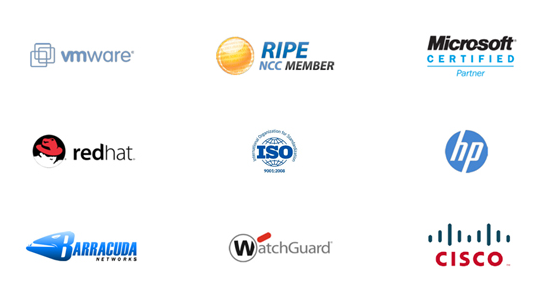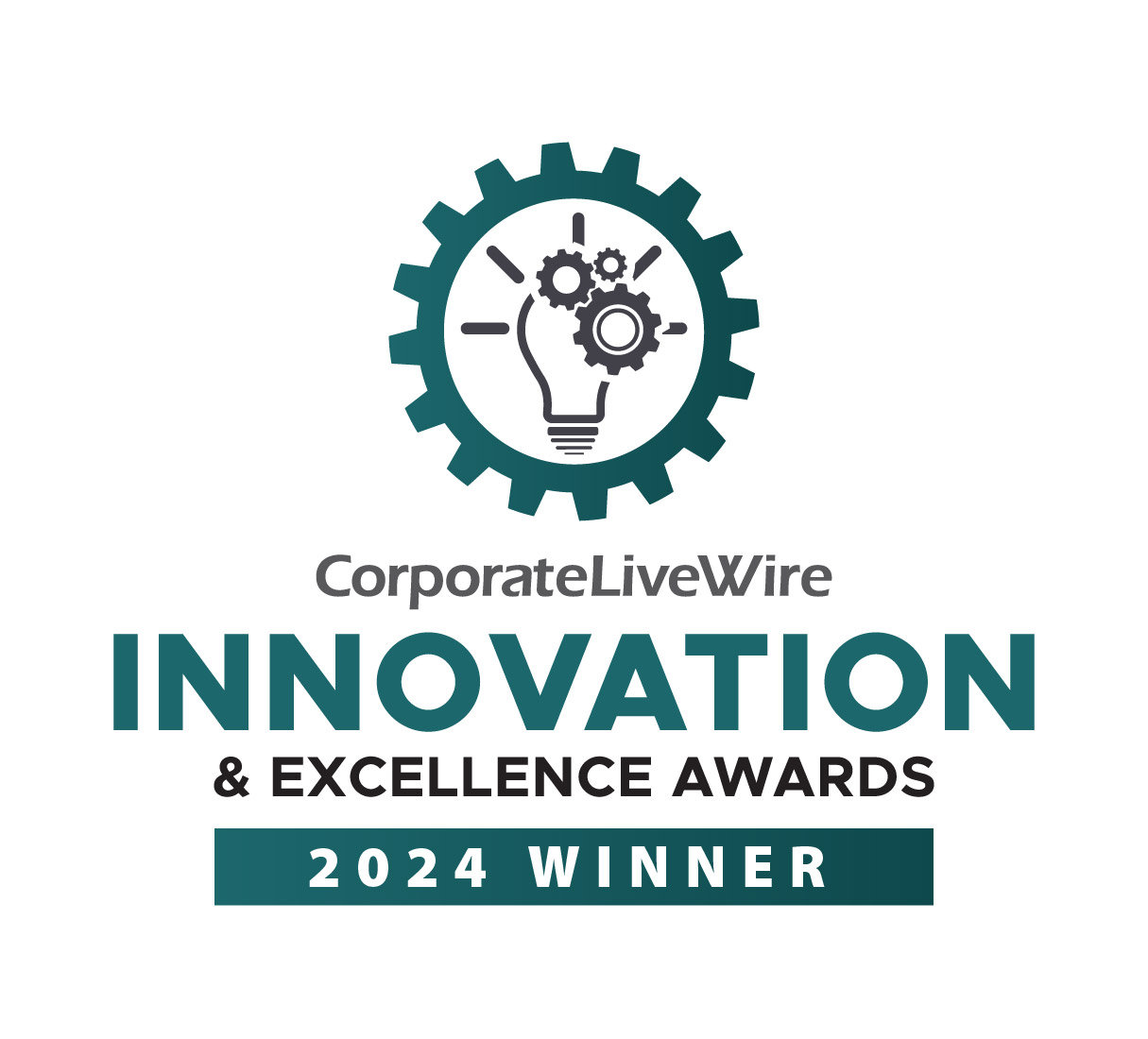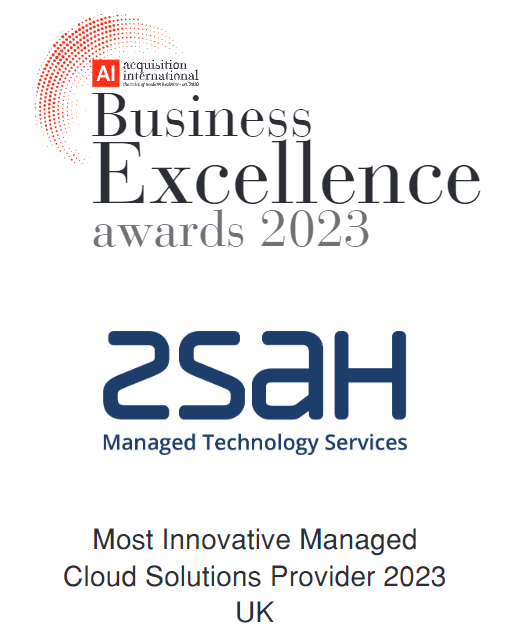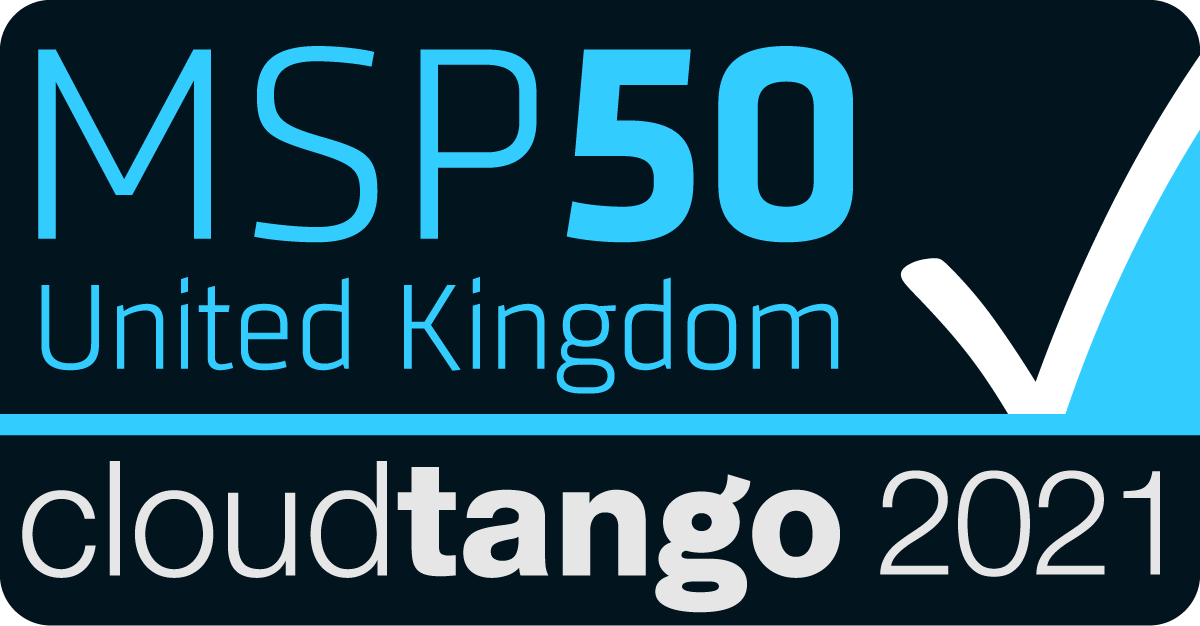All in one place - Glossary of Tech Terms
It’s funny – when you work in a certain industry you quickly absorb its unique lexicon, and all the jargon and acronyms associated with it rapidly become like a second language to you. However, it’s easy to forget when speaking to people from other lines of work that not everyone is as intimately familiar with these terms as you are.
This is especially true in the tech space, where advances in both the technology itself and the systems and philosophies associated with it evolve at such a rapid rate. In this environment, it can be difficult for even people closely tied to the industry to keep up, never mind laypeople.
With that in mind, we thought it would be a good idea to provide you with a glossary of tech terms and abbreviations to help you more effectively navigate this often-confusing space.
Artificial Intelligence as a Service (AIaaS)
Artificial Intelligence as a Service refers to cloud-based services that provide access to artificial intelligence and machine learning capabilities. AIaaS platforms offer pre-built AI models, tools, and infrastructure, enabling developers and organisations to integrate AI functionalities into their applications without developing the underlying AI infrastructure from scratch.
Amazon Web Services (AWS)
Amazon Web Services is a comprehensive and widely adopted cloud computing platform provided by Amazon. AWS offers a broad range of services, including computing power, storage, databases, networking, machine learning, and more. AWS provides flexible and scalable solutions to individuals, businesses, and organisations of all sizes, enabling them to build and deploy applications, host websites, store data, and access a wide array of cloud-based resources.
Application Modernisation
Application modernisation refers to the process of updating and improving existing software applications to align them with current technology trends, improve their performance, enhance their functionality, and make them more adaptable to evolving business needs. This often involves migrating legacy applications from older platforms or architectures to modern technologies, such as cloud-based infrastructures or containerised environments. The goal of application modernisation is to extend the lifespan of valuable software assets, reduce maintenance costs, and ensure that applications remain secure, scalable, and efficient in a rapidly changing technological landscape.
Application Programming Interface (API)
More commonly referred to as an API, an application programming interface is a type of software interface that allows two or more computer programs to communicate with each other. For example, a weather app on a mobile phone may use an API to communicate with the Met Office’s software system to retrieve its weather data, or a travel booking platform will pull information from numerous airlines, hotels, and travel agencies using APIs.
Backend
Backend refers to the part of a software system that manages data storage, processing, and communication with other systems, while remaining hidden from the user. It is responsible for handling server-side logic, database interactions, and APIs.
Backend as a Service (BaaS)
A cloud computing model where third-party providers offer server-side functionality, such as data storage, authentication, and APIs, as a service to developers, freeing them from managing infrastructure and allowing them to focus on frontend development.
Big Data Analytics
Big data analytics is the process of extracting valuable insights from vast and complex datasets to enable data-driven decision-making. It involves using advanced techniques and technologies to analyse large volumes of data from diverse sources. Through data pre-processing, storage, analysis, and visualisation, organisations can uncover patterns, trends, and actionable information to reveal opportunities for innovation and growth.
Big Data
Big data refers to extremely large and complex datasets that cannot be processed or analysed using traditional data processing methods. It requires advanced tools and techniques to extract insights and value, and is often characterised by the 5Vs: volume, velocity, variety, veracity, and value.
Cache
In computing, a cache refers to a small, high-speed memory used to store frequently accessed data for faster access. Caches are designed to speed up data retrieval by temporarily storing information that is expected to be accessed repeatedly.
Central Processing Unit (CPU)
A central processing unit (CPU) is the primary component of a computer that performs the majority of the processing tasks. It interprets instructions from software and carries out arithmetic, logic, and input/output operations. CPUs are typically measured by clock speed, cache size, and the number of cores they have.
Continuous Integration/Continuous Deployment (CI/CD)
Continuous Integration/Continuous Deployment (CI/CD) is a software development practice that emphasises automation in the software delivery process. CI involves automatically integrating code changes from multiple developers into a shared repository, while CD focuses on automating the deployment of these changes to production environments, ensuring rapid and frequent software releases.
Clock Speed
Clock speed is the rate at which a processor executes instructions, measured in gigahertz (GHz) It determines how many calculations a CPU can perform per second. A higher clock speed generally results in faster processing, but it also generates more heat and can consume more power.
Cloud
Servers located in data centres all over the world which are accessed via the internet. Cloud computing allows people or organisations to access storage or other applications without having to run software on their own devices.
Cloud Bursting
Cloud bursting is a hybrid cloud computing model that allows organisations to dynamically scale their computing resources by seamlessly extending their on-premises data centre infrastructure into the public cloud during periods of high demand. This approach enables businesses to handle sudden spikes in workload without over-provisioning their own hardware. This flexible scalability ensures optimal performance and cost-efficiency while maintaining the agility required to meet changing workload demands.
Cloud Management Platform (CMP)
A cloud management platform (CMP) is a tool that helps organisations manage their cloud infrastructure by providing a centralised interface to monitor, orchestrate, and automate cloud resources across multiple providers. CMPs typically include features such as cost optimisation, security management, and governance policies.
Cloud Migration
Cloud migration is the process of moving an organisation's data, applications, and other digital assets from on-premises infrastructure to cloud-based infrastructure. The goal is to achieve greater scalability, flexibility, and cost-efficiency while maintaining or improving performance and security.
Cloud Service Provider (CSP)
A cloud service provider is a company that offers cloud computing services – including infrastructure, platforms, and software – to customers over the internet. CSPs manage and maintain the underlying hardware and software infrastructure, providing scalable and on-demand resources to users.
Cloud Washing
Cloud washing is a marketing tactic used by companies to claim their products or services are cloud-based when they are not. It is a form of greenwashing or whitewashing that aims to mislead consumers and benefit from the hype surrounding cloud computing.
Colocation
Colocation, in cloud computing, refers to the practice of renting physical space in a data centre to host an organisation's servers, networking equipment, and storage devices. Colocation providers offer the necessary power, cooling, and connectivity to ensure high availability and performance of the equipment.
Container
A container is a lightweight, standalone software package that includes all the necessary dependencies and libraries to run an application. Containers isolate the application from the underlying infrastructure, making it portable and easy to deploy and manage across different environments.
Content Delivery Network (CDN)
A content delivery network (CDN) is a distributed network of servers that work together to deliver web content, such as images, videos, and HTML pages, to end-users based on their geographic proximity to those servers. CDNs improve the speed and reliability of content delivery, reducing latency and bandwidth costs, and is especially useful for websites or online services with extremely high traffic and/or a wide geographical reach. The way Netflix delivers content to users is a good example of a CDN.
Core
A core refers to a physical processing unit on a computer's central processing unit (CPU). A single CPU can have multiple cores, allowing it to handle multiple tasks at once, improving overall performance, and reducing processing time.
Data Governance
Data governance refers to the framework and practices for managing organisational data, ensuring quality and security in accordance with policies and standards. It involves defining
roles, responsibilities, and procedures to maintain data accuracy, consistency, privacy, and compliance. The goal is to maximise data value, mitigate risks, and support effective decision-making across the organisation.
DataParQ
A proprietary zsah acceleration layer which enables global organisations to exploit Data & AI with low coding. DataParQ scales enterprise wide with governance to create a supportable DataOps lifecycle.
Data Migration
Data migration is the process of moving data from one system or storage location to another. It involves transferring data from the source system, validating it, and loading it into the target system. Data migration is critical for system upgrades, data centre moves, and consolidation efforts.
DBA
Doing Business As. When a person or company does business under a name other than the legal name. A DBA is also referred to as an “assumed name,” “fictitious business name,” or “trade name.”
Deep Learning
Deep learning is a subfield of artificial intelligence and machine learning that focuses on neural networks with multiple layers, known as deep neural networks. These networks are designed to automatically learn and extract features from data through a hierarchical and layered approach. Deep learning algorithms are particularly effective for tasks like image and speech recognition, natural language processing, and complex pattern recognition.
Desktop as a Service (DaaS)
Desktop as a Service is a cloud-based service that delivers virtual desktop environments to end-users over the internet. With DaaS, users can access their desktop, applications, and data from any device with an internet connection, enabling mobility and simplified desktop management.
DevOps
A portmanteau of “development” and “operations,” DevOps is a methodology used in the software development and IT industry. Using automated technology, DevOps seeks to shorten and improve system development life cycles for more effective and efficient IT operations.
Direction of Travel (as a Service)
Built by zsah for the aviation and travel industry during the COVID-19 crisis, Direction of Travel provided a detailed view on ongoing travel restrictions. It included a travel confidence index highlighting destination routes which could likely become restricted, and assisted passengers who may have been concerned about travel.
Disaster Recovery as a Service (DRaaS)
Disaster Recovery as a Service is a cloud-based solution that provides businesses with the ability to recover their systems and data in the event of a disaster. DRaaS allows organisations to replicate and store critical data and applications in the cloud, ensuring business continuity and minimising downtime.
Domain Name System (DNS)
The domain name system is a decentralised naming system used to translate domain names (e.g., example.com) into corresponding IP addresses (e.g., 192.168.0.1). DNS enables users to access websites and services using human-readable domain names, rather than remembering complex IP addresses.
Elastic Compute Cloud (EC2)
Elastic Compute Cloud is a virtual server infrastructure provided by Amazon Web Services (AWS). EC2 allows users to rent virtual machine instances in the cloud, providing flexible compute capacity. Users can launch, manage, and scale virtual servers to run applications and services as per their requirements.
Elastic Block Store (EBS)
Elastic Block Store is a persistent block-level storage volume provided by Amazon Web Services (AWS). EBS volumes are used to store data for EC2 instances and offer features such as durability, high availability, and the ability to scale storage capacity independently from compute resources.
Elasticity
Elasticity refers to the ability of a system or application to dynamically scale resources, such as computing power, storage, or network bandwidth, up or down based on demand. Elasticity enables organisations to optimise resource utilisation and cost while maintaining performance and availability.
Elastic Load Balancer (ELB)
Elastic load balancer (ELB) is a service that automatically distributes incoming network traffic across multiple resources, such as EC2 instances or containers, to improve availability and scalability of applications. ELB ensures that traffic is evenly distributed, while enhancing fault tolerance and providing high-performance load balancing capabilities.
Encryption
Encryption is the process of converting plain text or data into an unreadable format using an algorithm or a key, making it impossible for unauthorised parties to access or read the information. Encryption is commonly used to secure sensitive data during transmission and storage.
Enterprise Resource Planning (ERP)
Enterprise resource planning (ERP) is a software suite that integrates and manages core business processes such as finance, human resources, manufacturing, supply chain, and customer relationship management. ERP provides a unified view of the organisation's operations, enabling efficient decision-making and process optimisation.
Extensibility
Extensibility in computing refers to the ability of a system or application to be easily modified or extended with additional functionality without requiring major changes to the core code. Extensibility enables developers to customise and adapt software to meet specific needs or integrate with other systems.
Federated Database
A federated database is a distributed database system that aggregates data from multiple sources and presents it as a single logical database to users. Federated databases enable organisations to share data and resources across different systems and locations, improving scalability and data accessibility.
Frontend
Frontend refers to the part of a software application or website that the user interacts with directly, often through a graphical user interface (GUI). This includes components such as buttons, menus, forms, and other visual elements that are designed to be user-friendly and intuitive.
Google Cloud Platform (GCP)
Google Cloud Platform is a suite of cloud computing services provided by Google. GCP offers a wide range of infrastructure and platform facilities, including compute resources, storage, machine learning, data analytics, and more. GCP enables users to build, deploy, and scale applications and services on Google's infrastructure, leveraging the same technology that powers Google's renowned products like Google Search and YouTube.
Graphical User Interface (GUI)
A graphical user interface (GUI) is a type of user interface that allows users to interact with electronic devices or software through graphical elements such as icons, buttons, and menus. It is designed to be user-friendly and intuitive, providing an easy way to navigate and perform tasks.
Graphics Processing Unit (GPU)
A Graphics Processing Unit is a specialised electronic circuit designed to handle complex graphical and computational tasks. In cloud environments, GPUs are used for parallel processing and accelerated computing, enabling faster and more efficient execution of tasks like graphics rendering, machine learning, and scientific simulations.
Gridz
Gridz is a proprietary zsah cloud management dashboard which enables you to deploy virtual machines (VMs – see definition below) and infrastructure easily, whilst having a clear view of your virtual estate and all the costs related to it.
Host Machine
A host machine is a physical computer or server that provides resources and services to other computers or devices on a network. A host machine may run one or more virtual machines or containers, each with its own operating system and applications.
Hybrid Cloud
A hybrid cloud is a cloud computing environment that combines public and private clouds, allowing organisations to leverage the benefits of both. Hybrid clouds enable data and applications to be distributed across multiple environments while maintaining security, control, and flexibility.
Hypervisor
A hypervisor, also known as a virtual machine monitor, is a software or firmware layer that creates and manages virtual machines on a host machine. Hypervisors allow multiple operating systems to run on a single physical machine, enabling efficient resource utilisation and isolation between virtual machines.
Identity and Access Management (IAM)
Identity and access management (IAM) refers to the policies, technologies, and processes used to manage and control access to resources within a cloud environment. IAM systems allow organisations to define and manage user roles, permissions, and authentication mechanisms to ensure secure access and data protection.
Infrastructure
Infrastructure in computing refers to the underlying hardware, software, and networking components that support the operation and delivery of IT services and applications. This includes servers, storage, routers, switches, operating systems, databases, and other components required to run and manage IT environments.
Infrastructure as a Service (IaaS)
Infrastructure as a Service (IaaS) is a cloud computing model that provides users with virtualised computing resources, including servers, storage, networking, and other infrastructure components, over the internet. IaaS users have complete control over their computing environments and are responsible for managing their own applications and data.
Input Operations
Input operations refer to the process of entering data or instructions into a computer system through input devices such as keyboards, mice, scanners, or microphones. These operations allow users to interact with and control computer systems and perform various tasks such as data entry, browsing, or gaming.
Integrated Development Environment (IDE)
An integrated development environment (IDE) is a software application that provides a comprehensive set of tools for developing and testing software. IDEs typically include a code editor, debugger, build automation tools, and other features that streamline the development process and improve productivity.
Internet of Things (IoT)
The Internet of Things (IoT) is a network of interconnected devices embedded with sensors, software, and connectivity capabilities. These devices can collect and exchange data, enabling automation, monitoring, and control of physical objects and environments.
IT Service Management (ITSM)
IT Service Management describes the various methods associated with how IT teams manage the end-to-end delivery of IT services to customers. ITSM includes all processes and practices associated with the design, creation, delivery, and ongoing support of IT services.
Kernel Space
Kernel space refers to the part of an operating system where the kernel resides and operates. It is a protected and isolated area of memory where the kernel has direct access to the system's hardware and resources, and manages processes, memory, and operations.
Kubernetes
Also known as K8s (full hosting) or K3s (lightweight hosting), Kubernetes is an open-source system for automating deployment, scaling, and management of containerised applications. It groups the containers which make up an application into logical units for more effective and efficient management.
Linux
Linux is a free and open-source operating system based on the Unix operating system. Linux is widely used in servers, supercomputers, embedded systems, and mobile devices. Linux is highly customisable and supports a wide range of software applications and development tools.
Load Balancing
Load balancing is the process of distributing network traffic evenly across multiple servers or resources to optimise performance, reliability, and availability. Load balancers use various algorithms to determine the best resource to handle each request, ensuring that no single resource is overloaded.
Logic
In computing, logic refers to the way in which different components of a program or system interact with each other based on a set of predetermined rules or algorithms. This helps to ensure that the system operates correctly and produces the desired results.
Managed Infrastructure
Managed infrastructure (or managed infra) refers to IT infrastructure that is outsourced to a third-party provider who is responsible for its management, monitoring, and maintenance. Managed infrastructure typically includes servers, storage, networking, and security, and allows organisations to focus on their core business activities without the burden of managing complex IT infrastructure.
Managed Service Provider
A managed service provider (MSP) is a third-party provider that offers IT services and support to organisations. MSPs manage and maintain IT infrastructure and applications, provide help desk support, and offer consulting and advisory services. MSPs enable organisations to focus on their core business activities while outsourcing their IT management to experts.
Microsoft Azure
Microsoft Azure is a comprehensive cloud computing platform offered by Microsoft. It provides a vast array of cloud services, including virtual machines, databases, AI and machine learning tools, analytics, storage, and more. Azure enables businesses to build, deploy, and manage applications and services efficiently. With its global network of data centres, Azure offers scalability, high availability, and robust security features, making it a popular choice for organisations seeking cloud-based solutions.
Microservices
Microservices is an architectural approach to software development that involves building small, independent, and modular services that work together to form a larger application. Each service performs a specific task and communicates with other services via APIs, allowing for greater flexibility, scalability, and resilience.
Middleware
Middleware refers to software that acts as a bridge between different applications, systems, or components, enabling them to communicate and exchange data. Middleware provides a common platform for integrating disparate technologies and simplifying complex software architectures.
Machine Learning as a Service (MLaaS)
Machine Learning as a Service is a cloud-based service that provides machine learning capabilities to users without requiring them to set up and manage the underlying infrastructure. MLaaS platforms offer pre-built models, training and inference capabilities, and scalable infrastructure to facilitate the development and deployment of machine learning applications.
Multi-cloud
Multi-cloud refers to the use of multiple cloud computing services from different providers, either for different functions within an organisation or to avoid vendor lock-in. Multi-cloud allows organisations to choose the best services from multiple providers, improving flexibility, cost-effectiveness, and resilience.
Multi-tenancy
Multi-tenancy in cloud computing refers to a model where multiple users, or tenants, share the same computing resources and infrastructure while maintaining isolation and security. This allows cloud providers to optimise resource utilisation, scalability, and cost-effectiveness, while enabling tenants to access shared services and applications.
NetOps
Takes the methodology and philosophy of DevOps and applies them to networking operations. NetOps is an approach to network management that integrates automation, DevOps practices, and software-defined networking (SDN) technologies. NetOps streamlines network configuration, monitoring, and troubleshooting, and enables organisations to rapidly deploy and scale network infrastructure in response to changing business needs.
On-Demand Self-Service
On-demand self-service is a key characteristic of cloud computing that allows users to provision computing resources, such as storage, processing power, or applications, automatically and without requiring human intervention from the service provider. This enables users to quickly scale up or down resources as needed, on a pay-per-use basis.
Open Source
Open source refers to software whose source code is publicly available and can be freely modified, distributed, and used by anyone. Open source software typically fosters collaboration, innovation, and community-driven development, and often operates under licenses that promote sharing and reuse.
Operating System (OS)
An operating system (OS) is the software that manages computer hardware and provides common services for computer programs. It controls system resources and supports the execution of software applications, providing an interface for users to interact with the computer and its applications.
Output Operations
Output operations refer to the process of transferring data or results from a computer system to an output device, such as a monitor, printer, or storage device. It is the final step in the data processing cycle and allows users to view or use the processed data.
Platform as a Service (PaaS)
Platform as a Service (PaaS) is a cloud computing model where a third-party provider offers a platform for developers to build, run, and manage their applications. PaaS allows developers to focus on their code without worrying about infrastructure, operating systems, or other underlying components.
Private Cloud
A private cloud is a cloud computing environment that is dedicated to a single organization and provides computing resources, such as storage, processing power, and applications, on a private network. Private clouds typically offer higher security, greater control, and more customisation options than public clouds.
Public Cloud
A public cloud is a cloud computing environment that provides computing resources, such as storage, processing power, and applications, over the internet to multiple users or organisations. Public clouds are typically owned and operated by third-party cloud service providers and offer a pay-as-you-go pricing model.
Rafay
A trusted zsah partner. The Rafay Kubernetes Operations Platform was specifically designed to help enterprises and service providers manage the lifecycle of their Kubernetes (see definition above) infrastructure and modern application. Kubernetes Operations is a holistic approach that unifies the lifecycle management of both Kubernetes clusters and containerised applications.
RDS Relational Database Service
Relational Database Service is a managed database service offered by various cloud platforms, including Amazon Web Services (AWS). RDS simplifies the administration and operation of relational databases, such as MySQL, PostgreSQL, Oracle, and SQL Server. It handles tasks like backups, software patching, and automatic scaling, allowing users to focus on their application data.
Relational Database Service (RDS)
Relational database service is a managed database service offered by cloud providers such as AWS, GCP, and Microsoft Azure. RDS simplifies the deployment, administration, and scaling of relational databases, such as MySQL, PostgreSQL, Oracle, and SQL Server. With RDS, users can focus on application development and data management, while the cloud provider handles tasks like software patching, backups, and automatic database scaling.
Simple Storage Service (S3)
Simple Storage Service is a widely used cloud storage service provided by Amazon Web Services (AWS). S3 offers scalable object storage for storing and retrieving data over the internet. It provides durability, high availability, and cost-effective storage options for various types of data, such as files, images, videos, and backups.
Software as a Service (SaaS)
Software as a Service (SaaS) is a cloud computing model that allows users to access and use software applications over the internet on a subscription basis. SaaS applications are typically hosted and managed by third-party providers and accessed via a web browser or mobile app.
Scalability
Scalability in computing refers to the ability of a system to handle growing amounts of work or traffic by increasing resources such as processing power, memory, or storage. It ensures that a system can accommodate an increasing workload without sacrificing performance or availability.
Service Level Agreement (SLA)
The contract between a service provider and the customer which lays out the terms of the arrangement. Will typically define the level of service, availability, and acceptable performance parameters guaranteed by the service provider.
Serverless Computing
Serverless computing is a cloud computing model where the cloud provider manages the infrastructure and automatically provisions, scales, and manages the resources needed to run applications. Developers can focus on writing code without worrying about the underlying infrastructure.
Shared Resources
Shared resources refer to the resources (such as storage, memory, and network) that are accessed by multiple applications or users concurrently. The resources are allocated dynamically and efficiently to meet the demands of the users.
Software-Defined Networking (SDN)
Software-defined networking is an approach to network architecture that separates the control plane from the data plane. It allows administrators to centrally manage and configure network resources using software-based controllers, providing agility, flexibility, and programmability in network management.
User Space
User space refers to the area of memory where user-level applications run, separated from the privileged kernel space. It provides an isolated environment where applications can execute without interfering with other applications or the operating system.
Vertical Cloud
A vertical cloud is a type of cloud computing that is designed to meet the specific needs of a particular industry or business sector, such as manufacturing, logistics, or healthcare. It typically provides industry-specific software applications, infrastructure, and services tailored to the unique requirements of a specific vertical market.
Virtual Desktop
A virtual desktop is a cloud-based desktop environment that is hosted remotely, allowing users to access their applications and files from any device with an internet connection. The desktop is accessed through a remote display protocol that delivers a user experience similar to that of a traditional desktop computer.
Virtual Desktop Infrastructure (VDI)
Virtual desktop infrastructure is a technology that enables the creation and delivery of virtual desktop environments to end-users. VDI allows users to access their desktop, applications, and data from a centralised server or cloud infrastructure, providing flexibility, centralised management, and enhanced security.
Virtual Machine
A virtual machine (VM) is a software emulation of a physical machine that runs its own operating system (OS) and behaves like an independent computer with its own CPU, memory, and storage. Multiple VMs can run on a single physical machine, allowing for efficient use of resources and easier management.
Virtual Private Cloud (VPC)
A virtual private cloud is a private and isolated virtual network within a public cloud infrastructure. A VPC allows users to create and manage virtual networks with customisable IP addresses, subnets, and routing tables, providing enhanced security and control over network resources.
Virtual Private Network (VPN)
A virtual private network is a secure and encrypted connection that allows users to access a private network, such as a corporate network, over a public network like the internet. It ensures secure transmission of data and enables remote users to access resources as if they were directly connected to the private network.
What Have We Missed?
There you have some of the most common terms you’re likely to encounter when negotiating the wonderful world of zsah managed technology services – but this list is far from exhaustive, and we will be updating it regularly.
Is there a word missing you’d like us to add? An acronym you need explaining? Let us know here and we’ll add it to the list.





100% Reliability for your organisation
In a fast-moving world, two things remain the same: your need to delight your customers and outflank the competition. There’s a multitude of companies vying to offer you managed services, but which one’s right for you? How do you scale their offerings to suit your business goals and your budget, and how do you get these disparate suppliers working together for the good of your organisation?
As a truly managed service provider, we pride ourselves on working hand in hand with our clients. This way, not only do we really understand and provide solutions perfectly suited to your organisation, but once those solutions are in place, our highly specialised UK-based support team are accessible 24 hours a day 7 days a week.
From our ISO accredited solutions to our high-security data centres, our experts ensure your data is held in compliance with data protection rules and ISO27001 requirements, in a location that is appropriate for your organisation.
Take a look at our case studies to see what our customers say about us.
Prepare for tomorrow. Call us today.
We'd love to hear from you.
Sign Up Now!
For expert advice and resources – blogs, interviews, webinars, guides and more.

Find us
London Office
15 Reece Mews, London, SW7 3HE
India Office
No. 26/27, CBD, L-9, REGUS, Raheja Towers, East Wing
MG ROAD, Bengaluru, Bengaluru Urban, Karnataka, 560001

